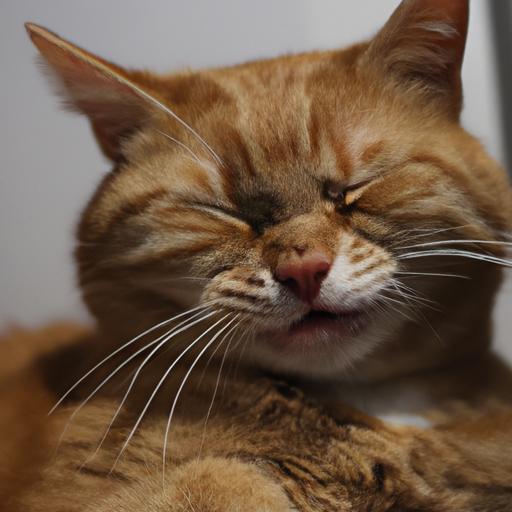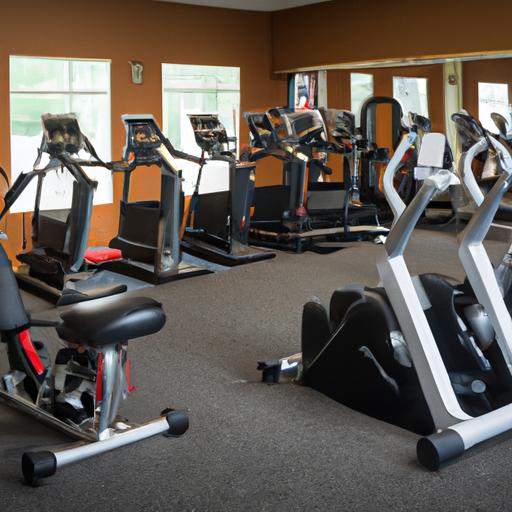How to Cut Picnic Ham: Mastering the Art of Precise Slices
Picnic ham, a delightful centerpiece for outdoor gatherings and family picnics, offers a mouthwatering combination of juicy meat and savory flavors. But the key to truly elevating your picnic ham experience lies in mastering the art of cutting it properly. In this article, I will guide you through the steps to achieve perfectly sliced picnic ham that will impress your guests and leave them craving for more.
A Brief Introduction to Picnic Ham
Picnic ham, also known as pork shoulder or picnic shoulder, is a cut of meat that comes from the front leg of the pig. It is renowned for its rich marbling, tenderness, and delectable taste. Unlike the traditional ham, which is made from the hind leg, picnic ham offers a slightly different texture and flavor profile. It’s incredibly versatile, making it a popular choice for various recipes, from sandwiches to stews and roasts.
Why Properly Cutting Picnic Ham Matters
Knowing how to expertly cut a picnic ham is crucial for several reasons. First and foremost, it allows you to create uniform slices that not only enhance the visual appeal of your dish but also ensure consistent cooking. Additionally, precise cuts make it easier to portion the ham for different recipes or individual servings. By understanding the anatomy of the picnic ham and employing the correct cutting techniques, you can make the most of this succulent cut of meat.
Now that we’ve covered the basics, let’s dive into the essential tools and equipment you’ll need to get started on your journey to becoming a picnic ham cutting pro. Stay tuned!
Tools and Equipment Needed
A. Essential Tools for the Perfect Cut
To achieve precision and finesse while cutting picnic ham, you’ll need a few key tools. Make sure to gather the following:
-
Sharp Knife: A high-quality, sharp knife is the cornerstone of successful picnic ham cutting. Opt for a long, thin blade that allows for smooth, controlled movements. A chef’s knife or a slicing knife are excellent choices.
-
Cutting Board: Choose a sturdy cutting board with a groove or a well to catch any juices that may flow during the cutting process. A wooden or plastic cutting board is preferable, as it minimizes the risk of the knife slipping.
-
Carving Fork: A carving fork, with its long, sturdy tines, provides stability and control when holding the picnic ham in place during cutting. It ensures safety and helps maintain a consistent cutting angle.
B. The Importance of Using the Right Tools
Using the appropriate tools is fundamental for achieving optimal results when cutting picnic ham. Here’s why:
-
Efficiency: The right tools make the cutting process more efficient, saving you time and effort. A sharp knife slices through the meat effortlessly, allowing you to make precise cuts without tearing or shredding the ham.
-
Safety: Proper tools not only make the job easier but also ensure your safety. A sharp knife reduces the risk of accidents associated with applying excessive force. Additionally, a stable cutting board and a carving fork provide a secure surface for steady cutting, minimizing the chances of slips or cuts.
-
Presentation: An aesthetically pleasing presentation enhances the dining experience. By using the right tools, you can achieve neat, uniform slices that showcase your culinary skills and create a visually appealing dish.
Now that you’re equipped with the necessary tools and understand their importance, we can move on to preparing the picnic ham for cutting. Let’s get started!
Preparing the Picnic Ham: Setting the Stage for Perfect Cuts
Selecting a Fresh Picnic Ham
Before embarking on the journey of cutting a picnic ham, it is vital to choose a fresh and high-quality cut of meat. When selecting your picnic ham, look for one with a firm texture, a pinkish color, and a generous layer of fat for added flavor and moisture. Opting for a bone-in picnic ham can also enhance the taste and tenderness of the meat. Remember, the quality of the ham you start with significantly impacts the end result.
Preparing the Picnic Ham for Cutting
To ensure a seamless cutting experience and achieve optimal results, proper preparation of the picnic ham is essential. Follow these two key steps before taking your knife to the meat:
1. Removing Excess Fat and Skin
Excess fat and tough skin can hinder the slicing process and affect the overall eating experience. Begin by using a sharp knife to carefully trim away any excessive fat from the surface of the ham. Leaving a thin layer of fat is ideal for flavor and moisture retention. Next, remove the tough skin by gently sliding the knife beneath it and peeling it away. This step will allow you to fully enjoy the succulent meat without any undesirable chewiness.
2. Trimming Any Unwanted Parts
Inspect the picnic ham for any unwanted parts, such as gristle, connective tissue, or bone fragments. These undesirable elements can disrupt the texture and presentation of the final dish. Use your knife to precisely trim away any problematic areas, ensuring a clean and appetizing cut of meat.
By meticulously preparing your picnic ham, you lay the groundwork for a successful cutting process. With the ham properly trimmed and ready, you are now ready to delve into the step-by-step guide on slicing your picnic ham like a pro. Keep reading to unlock the secrets of perfectly portioned slices that will leave your guests impressed.
Step-by-Step Guide on Cutting Picnic Ham
A. Positioning the Picnic Ham for Cutting
To begin, ensure you have a sturdy cutting board and a sharp knife. Place the picnic ham on the cutting board, with the fat side facing up. This positioning provides stability and allows for easy access to the different sections of the ham.
B. Identifying the Different Sections of the Picnic Ham
Before diving into the cutting process, it’s essential to familiarize yourself with the different sections of the picnic ham. The ham consists of two main parts: the meaty portion and the bone. Locate the bone, which runs through the center of the ham, and mentally divide the ham into two sections accordingly.
C. Cutting the Picnic Ham into Smaller Portions
Now, let’s move on to the actual cutting process. Follow these steps for precise and consistent results:
1. Slicing the Meat Against the Grain
Start by slicing the meaty portion against the grain. This technique helps break down the muscle fibers, resulting in a more tender and flavorful bite. Use a gentle sawing motion with your knife, ensuring each slice is even. Aim for slices that are approximately ¼ to ½ inch thick, depending on your preference.
2. Cutting Bone-In Sections
If your picnic ham has bone-in sections, such as the shank or hock, you’ll need to navigate around them. Carefully cut around the bone, using small, controlled strokes. Ensure each slice maintains its integrity and remains connected to the bone. These bone-in sections are perfect for soups, stews, or slow-cooking recipes.
3. Slicing Boneless Sections
For the boneless sections of the picnic ham, use a similar technique as slicing against the grain. Cut parallel to the bone, maintaining a steady hand and consistent thickness. These boneless slices are ideal for sandwiches, salads, or serving as the main protein on your picnic spread.
By following these step-by-step instructions, you’ll be able to master the art of cutting picnic ham like a pro. Stay tuned for the next section, where I’ll provide you with valuable tips to elevate your picnic ham cutting skills even further!
Tips for Cutting Picnic Ham Like a Pro
Mastering the art of cutting picnic ham requires not only the right techniques but also a few handy tips and tricks. By incorporating these suggestions into your cutting routine, you’ll be able to achieve professional-level results that will impress even the most discerning palates.
A. Maintaining a Steady Hand while Cutting
A steady hand is paramount when it comes to slicing picnic ham. To ensure precision and safety, follow these steps:
- Find your grip: Hold the knife firmly but not too tightly. A comfortable grip will give you better control over the blade.
- Practice proper posture: Stand with your feet shoulder-width apart and maintain a stable stance. This will provide a solid foundation for fluid and controlled movements.
- Use the right cutting technique: Employ a smooth slicing motion rather than applying excessive force. Let the sharpness of the knife do the work for you, guiding it through the meat with ease.
- Take breaks if needed: If you feel your hand becoming fatigued, take short breaks to rest. This will help to maintain your accuracy and prevent accidents.
B. Ensuring Even Slices for a Visually Appealing Presentation
Consistency is key when it comes to slicing picnic ham. Follow these tips to achieve uniformly cut slices:
- Sharpen your knife: A sharp knife glides through the meat effortlessly, resulting in cleaner and more precise slices. Regularly sharpen your knife to maintain its cutting edge.
- Slice against the grain: Pay attention to the grain of the meat and cut against it. This technique ensures that each slice is tender and easier to chew.
- Maintain consistent thickness: Aim for slices of equal thickness throughout the ham. This not only enhances the presentation but also ensures even cooking and flavor distribution.
C. Properly Storing Leftover Picnic Ham
After your picnic ham has been sliced, you may find yourself with some delicious leftovers. To keep them fresh and safe for future enjoyment, follow these steps:
- Cool the ham: Allow the sliced ham to cool at room temperature for about 30 minutes before refrigerating. This helps prevent condensation, which can lead to spoilage.
- Wrap it right: Wrap the slices tightly in plastic wrap or aluminum foil to protect them from air exposure. Alternatively, store them in airtight containers.
- Label and date: Clearly label the packaging with the contents and the date to ensure you use the leftovers within a safe timeframe.
- Refrigerate or freeze: Place the wrapped ham slices in the refrigerator for up to 3 days or in the freezer for up to 2 months. Remember to thaw frozen ham in the refrigerator before consuming.
By following these tips, you’ll not only become a pro at cutting picnic ham but also maximize its flavor and longevity. Now that you know the secrets to achieving perfect slices, it’s time to put your skills to the test and enjoy the mouthwatering results!
Tips for Cutting Picnic Ham Like a Pro
Cutting picnic ham like a pro requires precision, technique, and a touch of finesse. To help you elevate your picnic ham cutting skills, here are some valuable tips to keep in mind:
1. Maintaining a Steady Hand: When wielding your trusty knife, it’s crucial to maintain a steady hand. Focus on maintaining a firm grip and steady pressure as you slice through the ham. This will ensure clean, even cuts and prevent accidents.
2. Ensuring Even Slices for Visual Appeal: Presentation is key when serving picnic ham, and achieving even slices is essential for a visually appealing dish. To accomplish this, make sure your knife is razor-sharp to effortlessly glide through the meat. Additionally, use a carving fork to hold the ham in place while cutting, providing stability and control.
3. Properly Storing Leftover Picnic Ham: After your picnic ham feast, you may find yourself with some delectable leftovers. To ensure their freshness and flavor, proper storage is essential. Wrap the remaining ham tightly in plastic wrap or store it in an airtight container. Refrigerate promptly and consume within a few days for the best taste and quality.
Remember, practice makes perfect! Don’t be discouraged if your first attempts at cutting picnic ham aren’t flawless. With time and practice, you’ll gain confidence and master the art of precise slices.
As the final section of this guide, I hope these tips have provided you with the knowledge and inspiration to embark on your picnic ham cutting journey. Now, armed with the right tools, techniques, and a passion for culinary excellence, you’re ready to impress your loved ones with beautifully sliced picnic ham. So, get slicing and savor the mouthwatering results!





